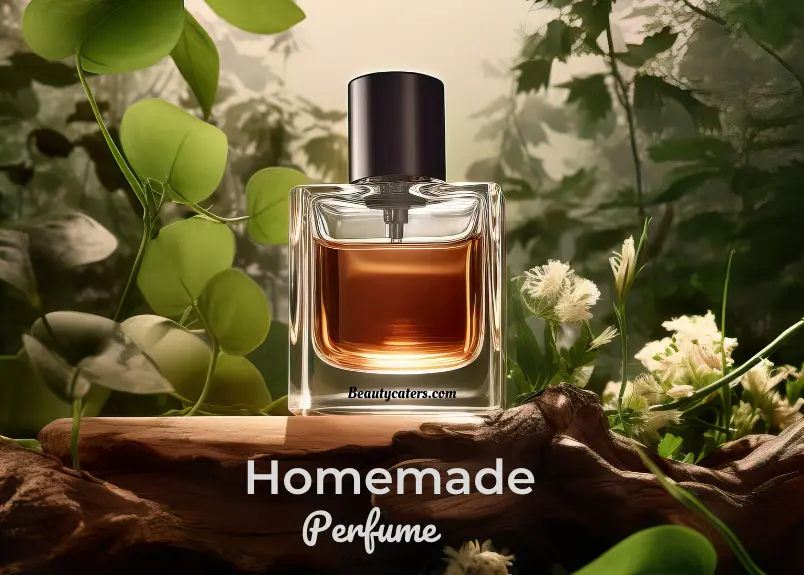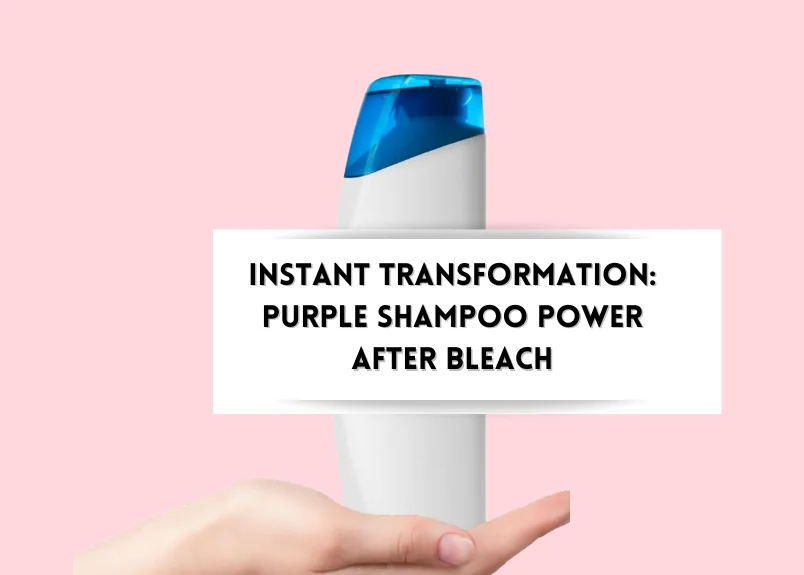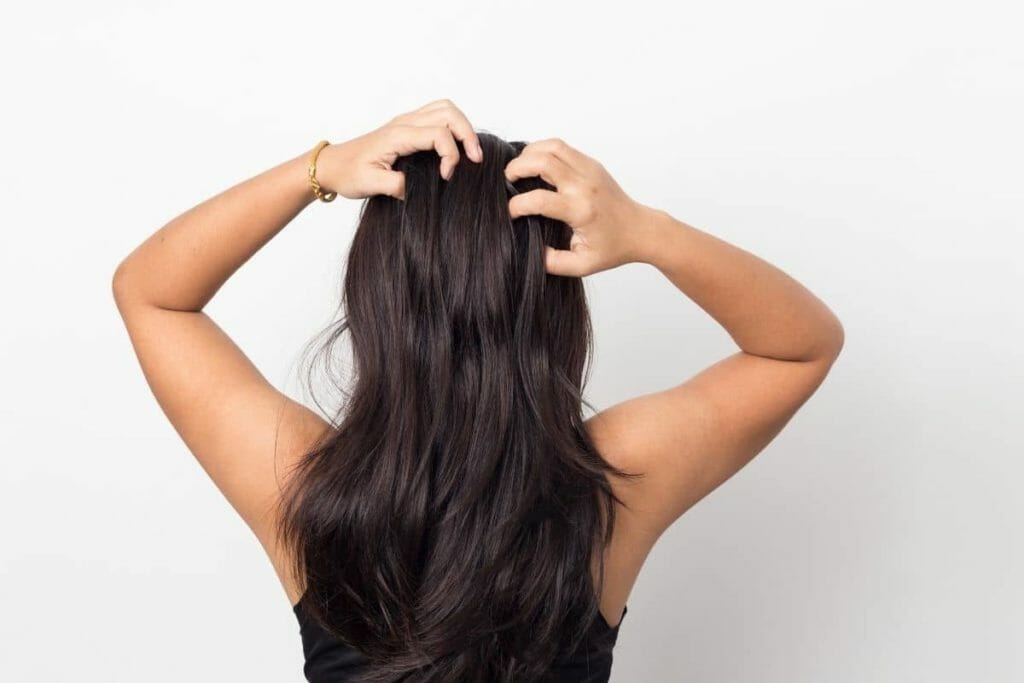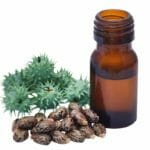How to Make Rice Shampoo Bar?- The DIY Recipe
At BeautyCaters, our expert team independently curates every recommended product. Purchases through our links may earn us a commission. Explore our transparent selection process.
Are those large numbers of hair in your comb the reason for your frown, just like me? Or the itchy scalp irritates you the most? Why not try one of the most effective, trending, and natural hair cleansing solutions- a homemade rice shampoo bar? Want to know how to make a rice shampoo bar? Here is the DIY recipe- my homemade rice shampoo bar.
This rice shampoo bar gave me an incredibly clean, healthy scalp and resilient, lustrous hair. So, are you interested in making one too? Then, let’s start this exciting DIY project together!
Note: Handling lye can be hazardous, wear protective gear and work in a well-ventilated area.
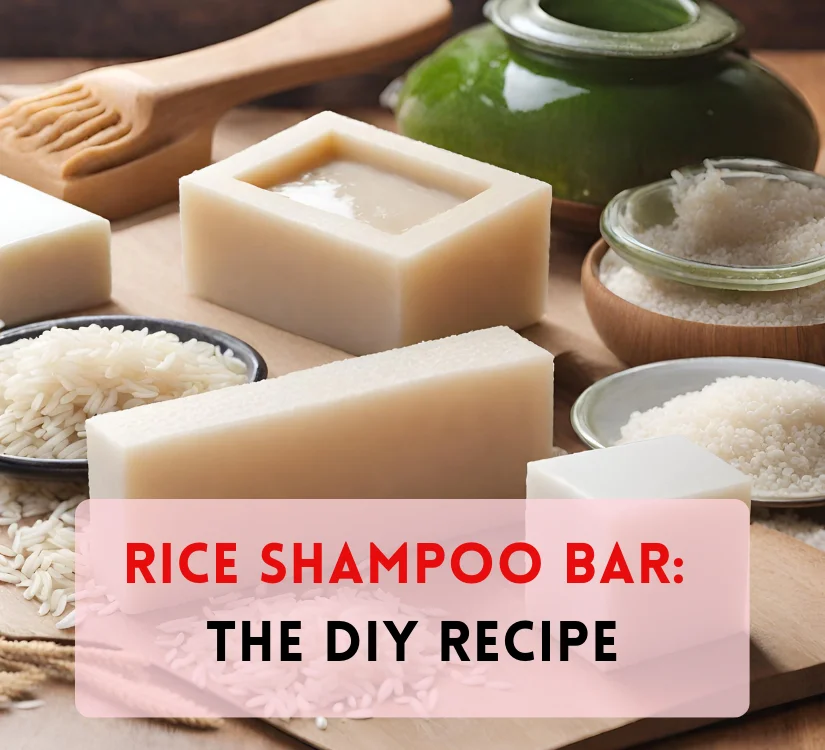
What is rice water shampoo?
The trending rice water has been an age-old Asian hair care treatment. The Japanese women in the Heian period and Yao women of China attributed the starchy, nutrient-packed rice water as the secret to their floor-length, healthy, dark, ageless hair. This elixir, made by soaking, boiling, or fermenting rice in water, is rich in vitamins, potassium, magnesium, iodine, selenium, zinc, and manganese. It nourishes the scalp and hair, repairs, strengthens, and adds shine and growth to the follicles.
As the name says, rice water shampoo is a purifying hair cleanser containing nutrient-enriched starchy leftover water as the main ingredient.
Why use rice shampoo bar?
With age, hormonal change, and environmental damage, scalp and hair undergo many changes. You may notice a decline in natural oil production, hair thinning, and more hair fall, dealing with sensitivity, itchiness, irritation, and inflammation. Rice shampoo benefits hair with increased growth, strength, and a healthier scalp. Hence, it would be foolish not to incorporate rice water into your hair care routine.
Benefits of rice water shampoo bar

Here are the 4 benefits your hair would draw from rice water shampoo from the time you start using it:
Stimulate hair growth
Rice water shampoo bar is enriched with the powerful antioxidants- Vitamin C and E, known to stimulate blood flow and hair growth. Hence, after a few uses, you will notice nourished roots with faster hair growth.
Strengthens hair follicle
Rice shampoo bar contains the fortifying nutrients – inositol, a carbohydrate, and amino acids– cysteine and methionine. These nutrients fortify hair follicles with strength and reduce breakage. As a result, hair turns resilient enough to withstand pull.
Makes hair shiny
Rice shampoo bars also improve your hair’s texture and shine. Inositol, besides adding strength, also moisturizes hair follicles. This improves hair’s elasticity and texture. reduces frizz and turns hair smoother and shinier.
Treats dandruff and itchiness
Rice water reduces dandruff and itchiness. Its antioxidants and anti-inflammatory compounds soothe an inflamed scalp, the root cause of dandruff. Its starch absorbs excess oil that often worsens dandruff. Moreover, the probiotic properties of fermented rice water reduce the growth of pathological microorganisms that cause inflammation.
Related: Does charcoal shampoo darken hair?
How to make rice shampoo bar?
The DIY rice water shampoo bar recipe is a popular nourishing hair care method. This commercial shampoo alternative works on all hair types, whether your hair is thick, dry, or curly or oily. If you’re ready to embark on a DIY hair care journey, here’s a breakdown of the steps involved:
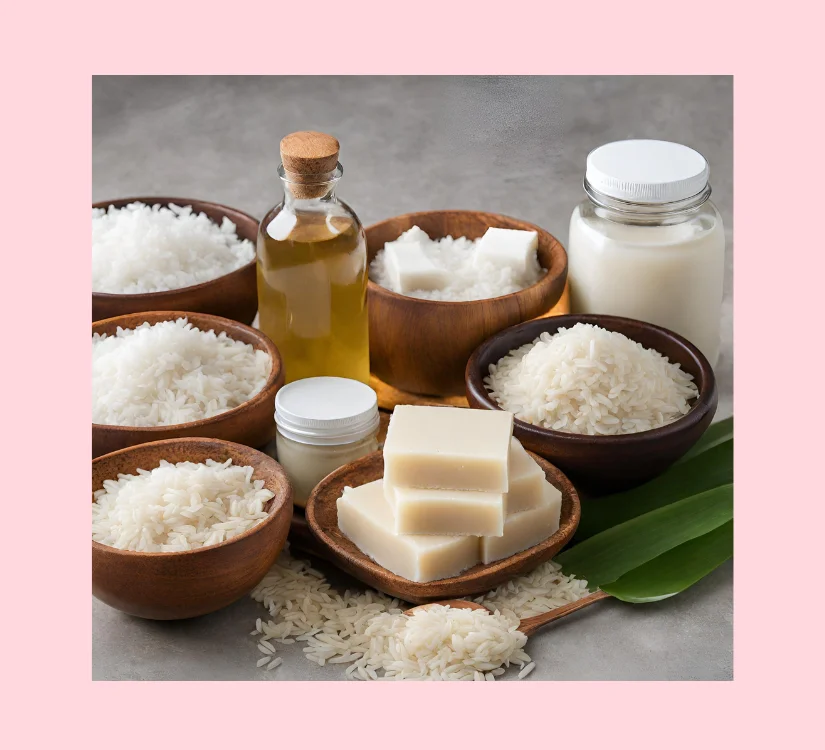
Ingredients
- Rice flour/ rice water: 2 tablespoon.
- Coconut oil:1 tablespoon (15 ml)
- Castor oil: 1 tablespoon
- Shea butter: 1/4 cup
- Castile soap (melted): 1/4 cup (60 ml).
Optional Ingredients:
- Essential oil (Lavender, rosemary, or peppermint): 7-8 drops
- Vitamin E oil or capsule – 1 teaspoon / 1 capsule.
Method
- Melt the Shea butter in a double boiler on medium heat.
- Add the melted castile soap and mix well.
- Add and mix the rice flour gradually.
- Stir well until the mixture is smooth without any lump.
- Cool the mixture at room temperature and add all the oils.
- Mix everything thoroughly.
- Pour the mixture into soap molds and let it harden at room temperature for 24 hours.
- Once hardened, carefully demold the shampoo bars and cure/air dry for 2-4 weeks.
- Finnally, your homemade rice shampoo bar is ready to use.
Equipments needed for rice protein shampoo bar
To successfully create your rice shampoo bar, you’ll need a few essential tools. Here’s what you’ll need:
- Heat-resistant bowl: This will be used for mixing the ingredients.
- Molds: Soap molds or silicone molds to shape your shampoo bars.
- Measuring tools: A kitchen scale to accurately measure the ingredients and a separate container for mixing lye and water.
- Mixing utensils: Use a spatula or spoon for mixing the ingredients together.
- Soap cutter: Optional but helpful for cutting the hardened shampoo bars into desired shapes.
Tips for making the rice shampoo bar
Before making a rice shampoo bar, follow these 3 tips to create the perfect bar.
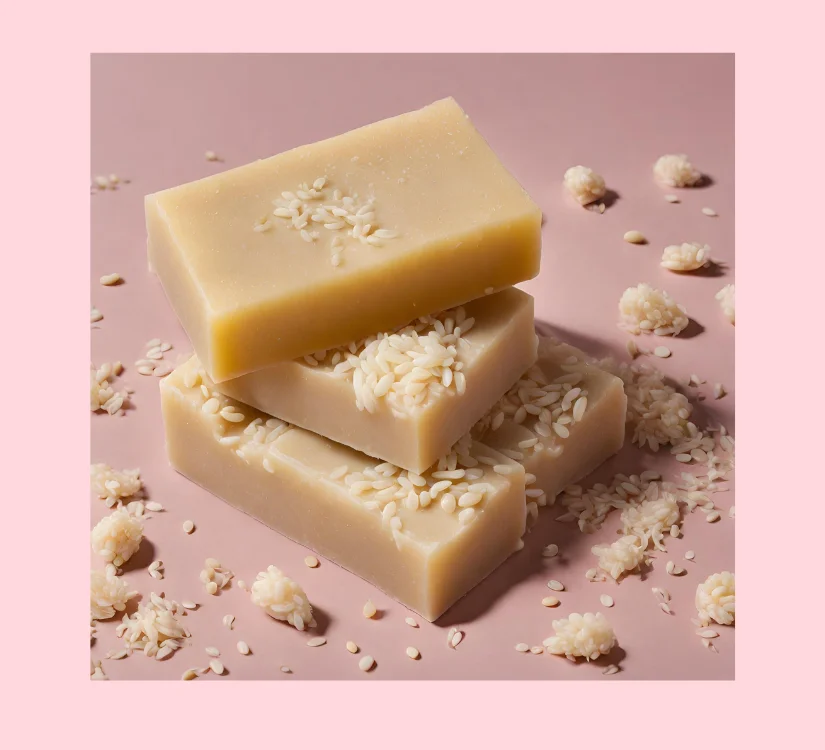
Select the ingredients wisely
Rice or rice water is the key ingredient in a shampoo bar. It has amino acids that nourish hair. Use coconut and olive oils for moisture and growth. Add essential oils like lavender, rosemary, or tea tree for fragrance and benefits. The ingredients determine the bar’s effectiveness.
Control the mixture’s consistency
The ideal consistency for your rice shampoo bar is critical for easy application and a good lather. Too much water makes a soft bar that dissolves quickly; too little creates a hard and dry bar. Add water gradually while stirring for a smooth, thick paste. It ensures the bar is firm enough to hold its shape yet soft enough to lather up easily. Remember, the consistency of your bar affects its performance.
Proper curing time
Cure your rice shampoo bar before use. Place the bars on a drying rack or well-ventilated area for 4 weeks. Proper curing guarantees that your shampoo bars last longer and provide the desired cleansing effect. Don’t rush the process!
Factors to consider for effective results
To make an effective rice shampoo bar- it is essential to keep in mind certain factors. After all, they impact its quality and performance.
Quality of the rice
High-quality rice is crucial when making a rice shampoo bar. Choose organic rice without pesticides and harmful chemicals to ensure that the nutrients and minerals in the rice benefit your hair.
Influence of other ingredients
Natural oils like coconut or argan oil can moisturize and prevent frizz in your homemade rice shampoo bar. Add essential oils like lavender or rosemary for additional benefits such as hair growth and improved circulation. Shea or cocoa butter can enhance conditioning properties. Choose and combine these ingredients carefully to achieve the desired results.
FAQs about rice protein shampoo bar
Can I make a rice water shampoo bar with brown rice?
Yes, you make rice water shampoo bars with brown rice. Brown rice has more nutrient value than white rice and is more effective.
Can I rice water shampoo bar on color-treated hair?
Yes, the rice shampoo bar is safe for color-treated hair. However, before using, do a patch test to ensure you’re not allergic to any ingredients.
Can I use a rice shampoo bar on oily hair?
Yes, the rice shampoo bar suits all hair types, including oily hair. It helps to regulate excess oil production on the scalp.
Can I add ingredients to my rice shampoo bar?
Yes, you can add other ingredients to your rice water shampoo bar. However, be aware that too many ingredients may alter the pH balance of the shampoo.
How long-lasting is a homemade rice water shampoo bar?
One homemade rice water shampoo bar equals 3 bottles of 350ml liquid shampoo. It means the shampoo bar would last for at least 80 washes.
Final Word: How to make rice shampoo bar?
This homemade rice shampoo bar is a sustainable hair care formula. It is gentle, nourishing, healthy, and chemical-free. But, at the same time, it is eco-friendly and budget-friendly too. So, make your rice shampoo bar with natural ingredients catering to your hair needs following this step-by-step guide.
Remember, safety should always be a priority. So carefully handle the ingredients and enjoy the journey to healthier, more sustainable haircare!


